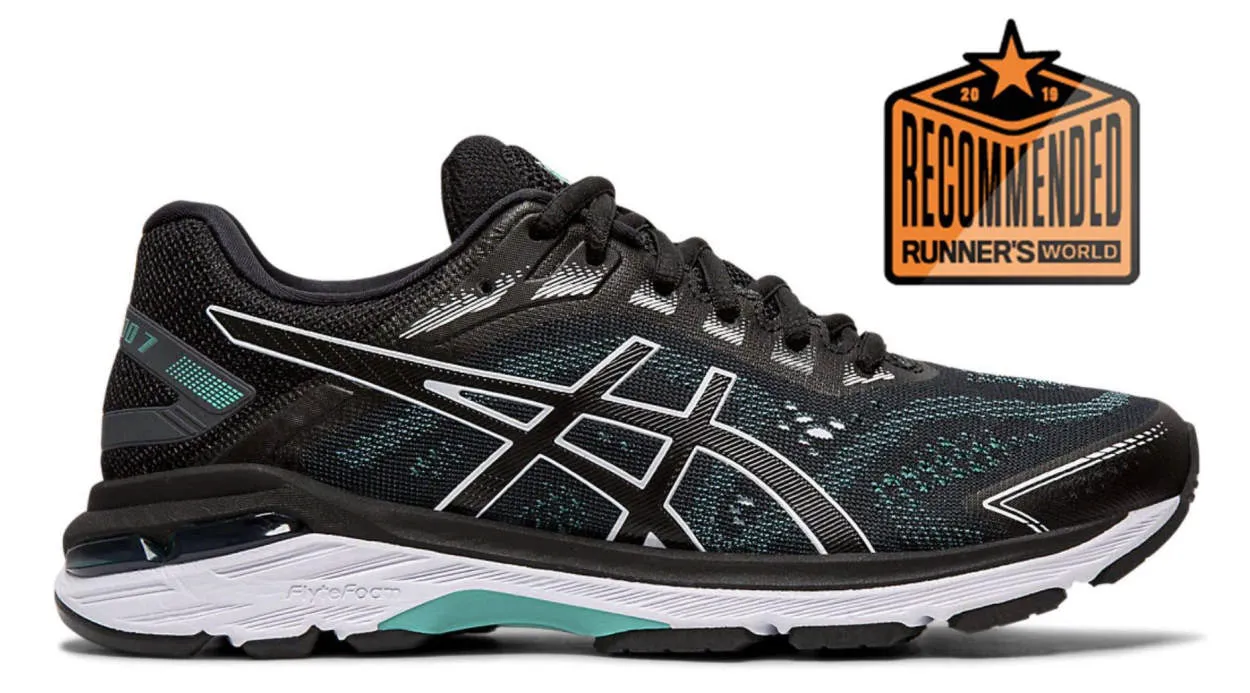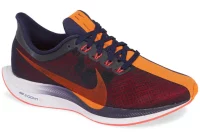If you’re a runner looking for the perfect pair of shoes, look no further. In this article, we will explore the best running shoe options for every type of runner. Whether you’re a beginner or a seasoned pro, we’ve got you covered.
Finding Your Perfect Running Shoe Match
When it comes to running, having the right pair of shoes can make all the difference. Every runner has unique needs, so it’s important to find a shoe that matches your individual running style and foot structure.
Here are some factors to consider when searching for your perfect running shoe:
Foot Type
Determine your foot type before buying running shoes. There are three main categories: neutral, overpronation, and underpronation. Knowing your foot type will help you choose a shoe with the right amount of support and cushioning.
Running Style
Consider your running style. Are you a long-distance runner, a sprinter, or do you prefer trail running? Different types of running require different shoe features. Long-distance runners may benefit from added cushioning, while trail runners need shoes with enhanced traction.
Shoe Fit
Always prioritize comfort and proper fit. Your running shoe should have enough room in the toe box to allow for natural foot movement. It should also provide adequate support to avoid injuries.
Try Before You Buy
Take your time to try on different brands and models of running shoes. Walk or run around the store to get a feel for each pair. Don’t rush the decision; finding the right shoe may take some trial and error.
Seek Expert Advice
If you’re still unsure, seek advice from professionals at a specialty running store. They can assess your running gait, analyze your foot strike, and recommend shoes that suit your specific needs.
Remember, finding the perfect running shoe is a personal journey. It may take some time and experimentation, but investing in the right pair will ultimately enhance your running experience and help prevent injuries.
The Difference Between Road and Trail Running Shoes
When it comes to running shoes, there are specific designs for different types of terrain. Two popular options are road running shoes and trail running shoes. Although both serve the purpose of providing comfort and support while running, they differ in several key aspects.
Road Running Shoes
Road running shoes are specifically designed for running on paved surfaces such as roads, sidewalks, and tracks. They typically have a smooth and cushioned sole that offers excellent shock absorption. These shoes are lighter in weight compared to trail running shoes, allowing for faster and more efficient movement on even terrain.
A key feature of road running shoes is the focus on providing ample cushioning to minimize impact on hard surfaces. They generally have a thinner and more flexible sole compared to trail running shoes. This design helps enhance responsiveness and provides a good ground feel, allowing for better control and improved speed.
Trail Running Shoes
Trail running shoes, on the other hand, are designed for off-road running, tackling various terrains such as dirt trails, rocky paths, and uneven surfaces. These shoes have a more aggressive outsole with deeper lugs or studs to provide better traction and grip on challenging terrain.
Trail running shoes are typically sturdier and more protective compared to road running shoes. They often feature a reinforced toe cap and additional layers of protection on the upper to shield the feet from rocks, roots, and other obstacles that are common on trails.
Additionally, trail running shoes also have a more structured and supportive midsole to handle the unevenness of the terrain effectively. They offer greater stability and prevent excessive pronation or supination during the run.
Choosing the Right Shoes
Deciding between road running shoes and trail running shoes depends on the type of surface you will mostly be running on. If you primarily run on pavements or well-maintained surfaces, road running shoes are a suitable choice. On the other hand, if you enjoy off-road running and frequently tackle challenging terrains, trail running shoes will provide the necessary traction and durability.
Ultimately, a good pair of running shoes should be comfortable, fit properly, and cater to your specific running needs. Whether you opt for road or trail running shoes, the most important factor is to find a pair that supports your feet and allows you to enjoy your running experience to the fullest.
Cushioning and Support Features in Running Shoes
When it comes to choosing running shoes, it is important to consider the cushioning and support features they offer. These features play a significant role in providing comfort, stability, and protection for every type of runner.
Cushioning is crucial in absorbing the impact of each stride, reducing stress on the joints and minimizing the risk of injuries. Different brands and models offer various forms of cushioning, such as gel, foam, or air pockets, to cater to individual preferences.
Support features are essential for maintaining proper foot alignment and preventing overpronation or supination. Overpronation refers to excessive inward rolling of the foot, while supination is an outward rolling. Both conditions can lead to discomfort and potential injuries. Look for shoes with medial posts, which provide additional support on the inner sides, or stability plates that help distribute pressure evenly.
Furthermore, many running shoes incorporate features like arch support, which assists runners with different arch types. Flat-footed runners may benefit from shoes with more pronounced arch support, while those with high arches might prefer neutral shoes with less arch support.
It is worth noting that the optimal cushioning and support features vary depending on personal biomechanics, running style, and individual needs. Therefore, it is recommended to consult with a professional or try on different models to find the most suitable running shoes for you.
Latest Trends in Running Shoe Technology
When it comes to running shoes, technology is constantly evolving to help cater to the needs of different types of runners. Manufacturers are continuously pushing the boundaries to create shoes that enhance comfort, performance, and injury prevention. Here are some of the latest trends in running shoe technology:
1. Lightweight Materials
Gone are the days of heavy, bulky running shoes. With advancements in materials like mesh, synthetic fabrics, and lightweight foams, running shoes are now lighter than ever. These lightweight materials allow for a more effortless stride and reduced fatigue during long runs.
2. Cushioning Technology
Runners seek optimal cushioning to protect their joints and provide a comfortable running experience. Modern running shoes incorporate various cushioning technologies that absorb impact, distribute pressure evenly, and offer maximum support. Examples include air pockets, gel inserts, and responsive foam systems.
3. Energy Return
A key focus in running shoe technology is the ability to provide energy return. Cutting-edge shoes are designed to harness and store energy from your foot strike, then release it during toe-off. This innovative feature helps propel runners forward, conserving energy and increasing speed.
4. Customized Fit
Everyone’s feet are unique, and the right fit is crucial for optimal performance and injury prevention. Advancements in technology now allow for customized fit options, such as 3D-printed midsoles and adjustable lacing systems. These features help provide a tailored fit, reducing discomfort and enhancing overall performance.
5. Data and Connectivity
Smart technology is making its way into running shoes. Many shoes now come with built-in sensors that provide data on various aspects of your run, including cadence, stride length, and ground contact time. Some even sync with smartphone apps or smartwatches, allowing runners to track their progress and analyze their performance in real-time.
6. Sustainability
With an increasing focus on sustainability, many running shoe manufacturers are incorporating eco-friendly materials into their designs. Recycled materials, biodegradable components, and environmentally-conscious production processes are becoming more prevalent. This trend allows runners to make a positive impact on the environment while enjoying their favorite sport.
The Impact of Foot Type on Shoe Choice
When it comes to running shoes, choosing the right pair can greatly depend on your foot type. The three main types of foot arches are flat, normal, and high. Understanding your foot type and its impact on shoe choice is crucial to ensure comfort and prevent injuries.
1. Flat Feet
If you have flat feet, it means you have low or no arches, causing your entire foot to make contact with the ground. Running shoes with good arch support and motion control are recommended for flat feet. These shoes provide stability and prevent overpronation, which is a common issue for individuals with flat feet.
2. Normal Feet
Individuals with normal feet have a moderate arch that absorbs shock effectively. They have a wide range of running shoe options to choose from. Cushioned shoes with medium stability are ideal for normal feet, as they provide a balance between support and flexibility.
3. High Arches
High arches occur when there is a significant gap between the heel and the ball of the foot. This foot type tends to underpronate or supinate, putting extra stress on the outer edges of the feet. For high arches, neutral-cushioned shoes with ample flexibility are recommended. These shoes provide shock absorption and better distribution of impact forces.
It is worth noting that each person’s feet are unique, and there may be variations within each foot type. Hence, it is essential to have a proper foot analysis done, such as by consulting with a professional shoe fitter or podiatrist, to get personalized recommendations.
Remember, selecting the right running shoes based on your foot type can enhance your running experience, reduce the risk of injuries, and contribute to overall performance. So, before you lace up and hit the road, make sure you choose the right shoes for your feet!
Conclusion
Choosing the right running shoes is crucial for every type of runner. Whether you are a beginner or a seasoned athlete, having the appropriate footwear can enhance your performance and reduce the risk of injuries. Consider factors such as your running style, foot type, and the type of terrain you typically run on. With a wide range of options available, there is a perfect pair of running shoes out there for everyone.




